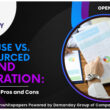In today’s digital world, media outlets face a constant barrage of information. Data is king, from social media feeds to press releases and audience analytics. But the key to unlocking its true potential lies in data cleansing – the process of identifying and rectifying inaccurate, incomplete, or irrelevant information. Clean data empowers media outlets to deliver high-quality, relevant content that resonates with audiences and fuels success.
Why Data Cleansing Matters for Media Outlets:
- Enhanced Content Relevance: Clean data ensures you work with accurate information, leading to more credible and trustworthy content.
- Improved Audience Targeting: Clean audience data allows you to tailor content delivery based on demographics, interests, and preferences.
- Streamlined Workflow: Eliminating duplicate or irrelevant data saves time and resources, allowing journalists to focus on high-value tasks.
- Boosted SEO Performance: Clean website data helps search engines accurately index your content, leading to better search rankings.
Data Cleansing Best Practices for Media Outlets:
- Standardization is Key: Establish clear guidelines for data entry across all platforms (CRM, CMS, social media) to ensure consistency and minimize errors.
- Embrace Automation: Utilize data cleansing tools to automate repetitive tasks like identifying duplicate entries and formatting inconsistencies.
- Human Verification Remains Crucial: While automation is valuable, human oversight is essential. Review flagged data points to ensure accuracy before publishing.
- Regular Data Hygiene: Schedule regular data cleansing audits to identify and address emerging data quality issues.
- Focus on Specific Data Sets: Prioritize cleansing the data sets critical to your content creation and audience targeting efforts.
Data Cleansing in Action: Real-World Examples for Media Outlets:
- Fact-Checking and Data Verification: Data cleansing is crucial for verifying information gleaned from social media or press releases before publishing.
- Audience Segmentation: Clean audience data allows for targeted content delivery. For example, sports news outlets can personalize content based on a user’s favorite teams.
- SEO Optimization: Clean website data with accurate content descriptions and meta tags improves search engine ranking.
The Benefits of Clean Data Extend Beyond the Bottom Line:
Data cleansing isn’t just about efficiency – it’s about ethical reporting and building trust with your audience. Media outlets that prioritize clean data delivery ensure their content is accurate and relevant, and fosters informed public discourse.
Investing in Data Cleansing: A Smart Move for the Future:
In the ever-evolving media landscape, prioritizing data cleansing is not optional – it’s a strategic imperative. By implementing these best practices, media outlets can transform their data from a chaotic mess into a valuable asset, empowering them to deliver high-quality content that resonates with their audience and fuels long-term success.


